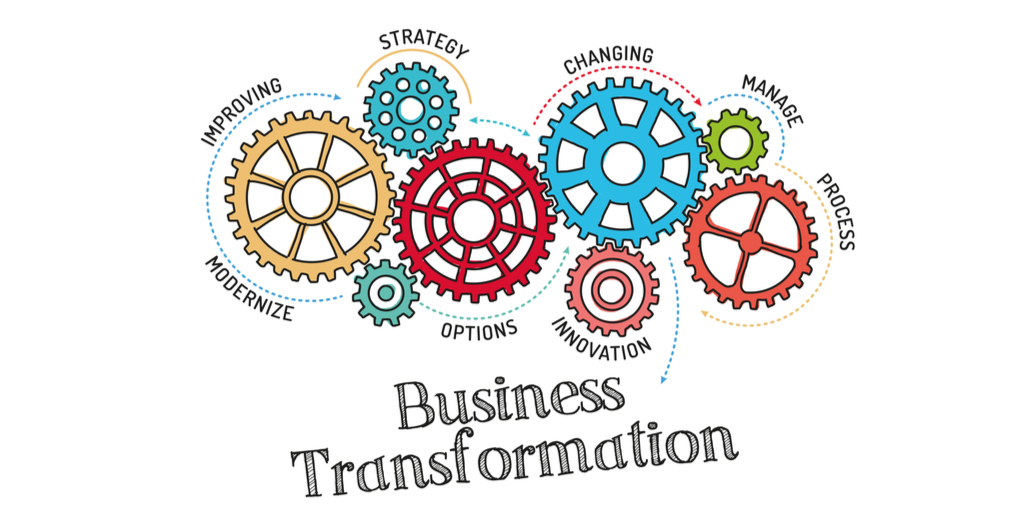Let’s get real. If you are working on a transformational change are you doing more with less or doing different things differently? Are you looking for incremental change or transformational change? It’s your choice, but if you say the latter and deliver the former (or nothing at all) you are going to pay a heavy price in your organization.
The Top Ten Things That WILL NOT Transform Your Organization
Creating an Agile Organization: How to Achieve Sustained Adoption
It’s easy to understand why so many organizations are turning to Agile. Being able to quickly adapt to new technology, innovation and continuous improvement is what keeps organizations one step ahead of their competition. But, “going Agile” isn’t as easy as it sounds. This change in mindset not only requires people to think in a whole new way, it requires the entire organization to do different things, in different ways.
Digital Transformation is the Wave of the Future. Can Your Organization Survive?
The digital transformation race is on! Everywhere I look organizations are working at double speed to find the most innovative ways to use technology to transform their organization. Digital transformation is not only changing the way business gets done, in some cases, it’s transforming entire industries! In short, digital transformation is a real game changer.
Critical Success Factors for Big Changes Including: Agile, Lean, ERP’s, Culture Change and M&A’s
Change is hard. Enterprise-wide, transformational change is geometrically more complex. While big changes such as Agile, Mergers & Acquisitions and Shared Services may make strategic sense for an organization, there is no doubt they can be time consuming and incredibly challenging.
Hiring Transformation Change Management Consultants: A Buyer’s Guide
With strategic plans in place for 2019, the focus turns to implementation. For many, transformational change will be high on the list. As you look to evaluate resources, you may find yourself needing additional bandwidth. So, you turn to external consultants—whether these are large consultancies or individual practitioners.
Overcoming the Challenges of Transformational Change
Watch This Quick Video Recap:
There is no doubt about it…change is hard. But, when you start talking about enterprise-wide, transformational change, things become geometrically more complex. Moving to Shared Services or implementing Agile or introducing a new patient care model may make perfect, strategic sense for your organization. But these types of transformational changes are not only time consuming; they’re also incredibly challenging.
Implementing Lean or Agile? Prepare Yourself for Culture Change
Several years ago it was Quality Assurance. Then it was Lean Six Sigma. Now everyone wants to be Agile. The allure of these bright, shiny business protocols is understandable. They are solid programs that promise to improve operational efficiencies. And who doesn’t want to improve business results?
The Secret to Success for a Shared Services Implementation
The concept of Shared Services certainly isn’t a new one. It’s been a popular business structure since the 1980’s. But, even now in 2017, the number of organizations transitioning to a Shared Services model continues to rise. Why? Because the model makes simple, economic sense. If you centralize administrative functions and share them between business units, you will standardize processes, eliminate redundancies and ultimately reduce costs. Sounds easy, right?
The Challenge of Culture Change: How to Motivate Your Organization to Move from the Status Quo
Your corporate culture is the collective pattern of values, behaviors, and unwritten rules of your organization— in other words, it’s the collective Frame of Reference for your organization. Others can copy your products and services. Others can even imitate your marketing. But no other company can replicate your organization’s culture. Your culture is what makes you… you.
Transformational Change: Don Harrison Answers Your 5 Most Frequently Asked Questions
Transformational change is excruciatingly complex. These big changes can’t be done incrementally, and can’t be made totally safe. Once you make the leap, you can’t change your mind and go back to the old ways of doing things if it’s not going well! People, processes and technology will all be impacted. Simply put, your organization will be doing different things in completely different ways.
Posts by Topic
- Change Management Methodology (89)
- Accelerating Implementation Methodology (AIM) (75)
- Transformational Change (60)
- Change Agents (56)
- Sponsorship (50)
- Leadership (45)
- Value Realization/ROI (40)
- Change Management Consulting (37)
- Comparing Change Management Methodologies (31)
- Culture (29)
- Project Management (28)
- Resistance to change (28)
- Change Readiness (24)
- Installation vs. Implementation (23)
- Barriers to Change (22)
- Enterprise-wide Change (22)
- Implementation Planning (19)
- Reinforcement (14)
- Change Management Training (11)
- Communication (9)
- Healthcare and Electronic Medical Records (9)
- Software/Technology Implementation (9)
- Assessing the Change Climate (8)
- Innovation (8)
- Lean/Six Sigma (7)
- Mergers & Acquisitions (4)
- Shared Services (3)











